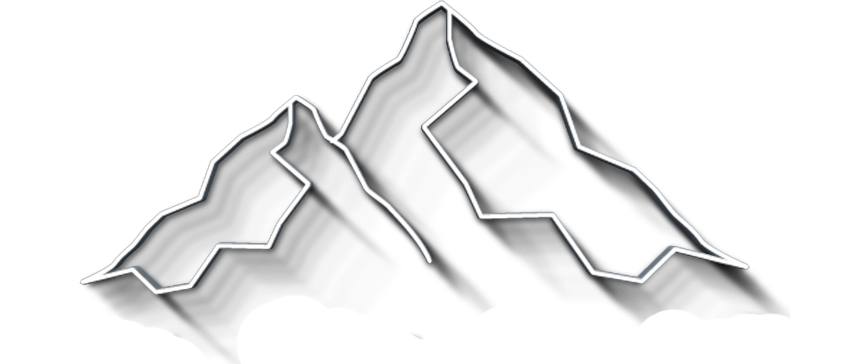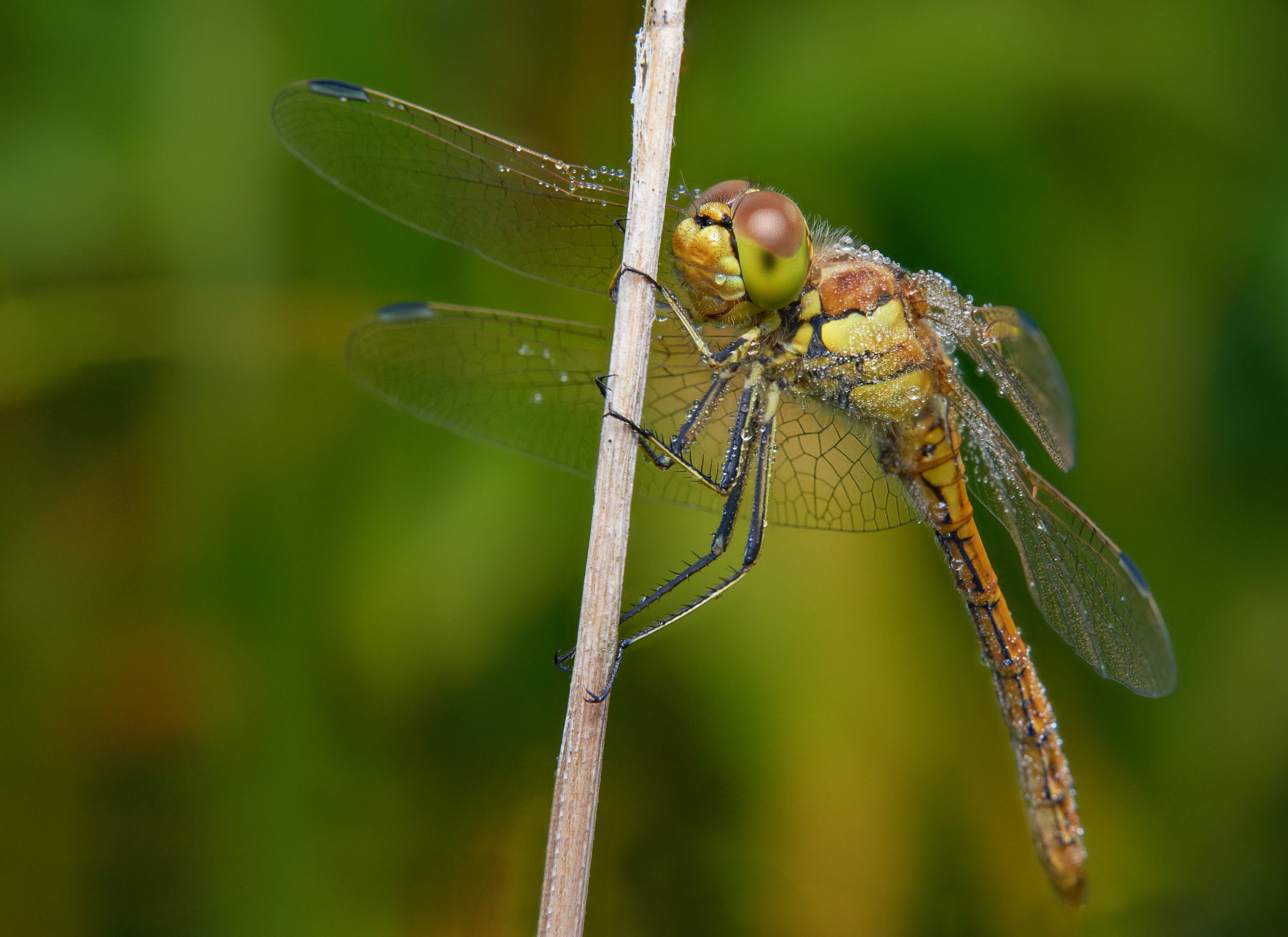Creating Stunning Macro Photography of Insects
If you've ever tried training a lens on a bee or butterfly then you likely know that insects make for challenging subjects! They flit, flee, and fly as fast as possible whenever you get too close for comfort.
This often leaves us wondering just how photographers manage to get detailed images like the ones above. With the right techniques, stunning macro photography of insects is entirely possible for you to achieve!
Download my Beginners Guide to Macro Photography - for Free!
How to Create Stunning Macro Photography of Insects
Focus Stacking
One of my favorite macro photography techniques is focus stacking. Normally when using a macro lens the depth of field is extremely thin. So thin that not much of your subject will be in sharp focus. This is fine for textures on flat surfaces or extremely small subjects. But it's very hard for you to show much of something moderately sized, like this insect above.
By focus stacking, you can create a highly detailed image that has a far deeper depth of field than what a macro lens typically provides.
A series of images, sometimes hundreds, are taken at a time. Each image has the plane of focus adjusted slightly from the previous one. As a result, the total collection of images contains your subject in fantastically sharp detail.
Therefore, by using software like Photoshop, Affinity Photo, or Helicon Focus you can then merge your focus stacked images into a single photograph with full macro detail! But there is a way to avoid using a dedicated focus stacking program...
In-Camera Focus Stacking
Cameras with built-in focus stacking are especially great for macro photography of insects!
The Nikon Z6 and Z7 also have inbuilt focus stacking features, but the Nikon version doesn't merge them into a single image for you. It just makes sure that you get all the necessary shots required for a perfect focus stack using one of the mentioned apps above.
Focus stacking without a built-in camera mechanism can sometimes take a fair amount of time. Therefore, you need to be either very lucky to have a still subject or be working with a well controlled one. Many focus stacked images are, unfortunately, of dead insects taken in a studio.
But not all of them! In nature, you can be lucky enough to find insects that are naturally completely still. Ambush hunters, like spiders, are often motionless for hours at a time.
Chilly Morning Photography
Dragonfly with natural dew drops. Focus stacked of 8 images. Handheld using flash.
Considering how alert and active fast-moving insects like this butterfly are, it should have been impossible to get an image this up close and personal, right? As it turns out, there is an important trick to macro photography of insects that seems obvious in hindsight: timing. The clue here is the morning dewdrops coating this dragonfly.
Mid-day macro photography of insects is an exercise in frustration even with the fastest autofocus systems. However, by starting your photography adventure in the early morning, you have a chance to find insects before they have a chance to warm up.
A chilly morning with dew coating the ground and plants is a fantastic time for you to begin macro photography of insects. Unlike us mammals insects are cold-blooded. While they are sluggish and unresponsive you can get extremely close without them darting away from you.
You should start your day right as the sun begins to rise. That way, you maximize the amount of time your insect targets remain immobile. This makes it easier to use macro rails, tripods, and other equipment that improve image quality but take time to set up.
Golden Hour Photography
The morning golden hour light is ideal for nature photography and this time often includes dew-filled mornings! The hour shortly after the sun rises or sets has a warmer tone thanks to its diffused character. Diffused lighting is scattered, rather than directional, leaving no hard shadows and lighting the subject in a very pleasing way! Whether you like pictures of people or butterflies, the Golden Hour is one of the best times to be shooting in natural light!
While insects are still warmed up and not as easy to shoot as right after sunrise, evenings are also a good time to try. You also get Golden Hour tones as the sun approaches the horizon into sunset. Lastly, depending on where you live, cool fall and winter temperatures allow easy macro photography of insects, if you can still find any.
Insect Food Sources
Sometimes a good bribe is the best way to make macro photography of insects happen! Instead of chasing them around a field, either locating or providing them with their favorite food source can make your job easier.
Sugar drinkers like ants, bees, wasps, and butterflies can smell sweet flavors from tremendous distances. Sugar solutions, hummingbird nectar, juice, fruit, and honey bring them in. Just make certain you know precisely what's in the solution you're preparing to avoid potentially poisoning insects that can't handle certain fruits, for example.
The main downside to this method is that you never really know what insects will show up. You might place a plate of fruit near a flowerbed expecting butterflies only for a crowd of aggressive wasps to arrive. Wasps are incredibly intolerant and likely to chase away anything that tries to have a taste and you if you try to remove the plate!
Feeding insects can also make it difficult to get the composition you want. If you're more interested in nature-oriented images, say bees feeding on flowers, you're going to have a lot more trouble. And given how crowded and active the insects are at a food source, you have to treat it more like a sporting event than a leisurely nature shoot! High burst rate cameras and lots of natural light are the keys here.
Instead, finding the favored food sources of the insects you're hoping to photograph can make things easier. Knowing that monarch butterflies are attracted to milkweed plants makes finding egg-laying adults, caterpillars, and even a chrysalis or newly hatched adult much more likely.
Camera Settings for Macro Photography of Insects
One of the main challenges to shooting macro photography of insects is the incredibly shallow depth of field (area in focus) created by macro lenses. A wide-open aperture (typically f/2.8) allows in good amounts of light. However, you may only have the thinnest plane of focus to work with your 3-D subject.
As discussed above, focus stacking lets you bypass this limitation by creating a composite image. However, it relies on your subject remaining absolutely still. Cold or dead insects work best in this technique.
Instead of relying on luck (or a refrigerator) try stopping down the aperture as far as you can. f/8-f/16 is ideal for macro photography, depending on the sensor format and the quality of your lens. Even though you do lose some sharpness due to diffraction at narrower apertures, having more in focus will make up for the slight softening effect.
Also, not only are macro lenses incredibly sharp, but you can correct for diffraction softening in Adobe Lightroom and other software pretty easily. If you don't want to invest in specialized lenses there are several alternative solutions for macro photography of insects you can try!
Camera Stabilization
Next, you'll also want to use either a high shutter speed or a tripod to keep camera shake from causing blur. Many modern cameras do have in-body or in-lens stabilization systems that work extremely well at slower shutter speeds. So you may be able to ignore this requirement if your exposure settings are suitable.
However, in low light or using a non-stabilized system, there's no substitute for a good tripod. Remember, macro photography of insects is about exposing the fine details of your subjects. Even a small amount of camera handshake will be readily visible as detail loss.
Conclusion
Macro photography of insects can seem extremely challenging if you just wander right out into a field and start shooting. But there are a number of tricks you can use once you decide on precisely what sort of subjects you're after and how to best display them.
Maybe you like casual encounters in the woods or carefully arranged studio shoots. Either way, well-composed macro photography of insects is something nearly anyone will find interesting!





